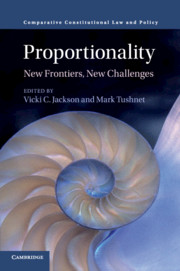95 results
Agricultural terraces in the Mediterranean: medieval intensification revealed by OSL profiling and dating
-
- Article
-
- You have access
- Open access
- HTML
- Export citation
Ten new insights in climate science 2020 – a horizon scan
-
- Journal:
- Global Sustainability / Volume 4 / 2021
- Published online by Cambridge University Press:
- 27 January 2021, e5
-
- Article
-
- You have access
- Open access
- HTML
- Export citation
Mindfulness and Behaviour Therapy for Insomnia: An Assessment of Treatment Effect in a Sleep Disorders Clinic Population with Insomnia
-
- Journal:
- Behaviour Change / Volume 38 / Issue 1 / April 2021
- Published online by Cambridge University Press:
- 27 November 2020, pp. 25-39
-
- Article
- Export citation
First report of Trypanosoma dionisii (Trypanosomatidae) identified in Australia
-
- Journal:
- Parasitology / Volume 147 / Issue 14 / December 2020
- Published online by Cambridge University Press:
- 28 September 2020, pp. 1801-1809
-
- Article
- Export citation
Deactivation of SARS-CoV-2 with pulsed-xenon ultraviolet light: Implications for environmental COVID-19 control
- Part of
-
- Journal:
- Infection Control & Hospital Epidemiology / Volume 42 / Issue 2 / February 2021
- Published online by Cambridge University Press:
- 03 August 2020, pp. 127-130
- Print publication:
- February 2021
-
- Article
-
- You have access
- Open access
- HTML
- Export citation
Better diet quality scores are associated with a lower risk of hypertension and non-fatal CVD in middle-aged Australian women over 15 years of follow-up
-
- Journal:
- Public Health Nutrition / Volume 23 / Issue 5 / April 2020
- Published online by Cambridge University Press:
- 14 October 2019, pp. 882-893
-
- Article
-
- You have access
- HTML
- Export citation
Measuring adherence in social recovery therapy with people with first episode psychosis
-
- Journal:
- Behavioural and Cognitive Psychotherapy / Volume 48 / Issue 1 / January 2020
- Published online by Cambridge University Press:
- 05 August 2019, pp. 82-90
- Print publication:
- January 2020
-
- Article
- Export citation
3308 Training KL2 Scholars to Communicate Science to a General Audience
-
- Journal:
- Journal of Clinical and Translational Science / Volume 3 / Issue s1 / March 2019
- Published online by Cambridge University Press:
- 26 March 2019, p. 75
-
- Article
-
- You have access
- Open access
- Export citation
Dietary nitrate consumption and risk of CHD in women from the Nurses’ Health Study
-
- Journal:
- British Journal of Nutrition / Volume 121 / Issue 7 / 14 April 2019
- Published online by Cambridge University Press:
- 23 January 2019, pp. 831-838
- Print publication:
- 14 April 2019
-
- Article
-
- You have access
- HTML
- Export citation
4D Printing of Magnetically Functionalized Chainmail for Exoskeletal Biomedical Applications
-
- Journal:
- MRS Advances / Volume 4 / Issue 23 / 2019
- Published online by Cambridge University Press:
- 13 March 2019, pp. 1361-1366
- Print publication:
- 2019
-
- Article
- Export citation
Taphonomies of landscape: investigating the immediate environs of Çatalhöyük from prehistory to the present
-
- Journal:
- Anatolian Studies / Volume 68 / 2018
- Published online by Cambridge University Press:
- 06 July 2018, pp. 177-207
- Print publication:
- 2018
-
- Article
- Export citation
Contributors
-
- Book:
- Proportionality
- Published online:
- 28 September 2017
- Print publication:
- 21 September 2017, pp v-vi
-
- Chapter
- Export citation
Copyright page
-
- Book:
- Proportionality
- Published online:
- 28 September 2017
- Print publication:
- 21 September 2017, pp i-iv
-
- Chapter
- Export citation
Index
-
- Book:
- Proportionality
- Published online:
- 28 September 2017
- Print publication:
- 21 September 2017, pp 322-336
-
- Chapter
- Export citation
Introduction
-
-
- Book:
- Proportionality
- Published online:
- 28 September 2017
- Print publication:
- 21 September 2017, pp vii-viii
-
- Chapter
- Export citation
Part IV - Thoughts for the Future: Of Skepticism and Research Agendas
-
- Book:
- Proportionality
- Published online:
- 28 September 2017
- Print publication:
- 21 September 2017, pp 273-300
-
- Chapter
- Export citation
Contents
-
- Book:
- Proportionality
- Published online:
- 28 September 2017
- Print publication:
- 21 September 2017, pp i-iv
-
- Chapter
- Export citation

Proportionality
- New Frontiers, New Challenges
-
- Published online:
- 28 September 2017
- Print publication:
- 21 September 2017
Part II - Proportionality and the United States
-
- Book:
- Proportionality
- Published online:
- 28 September 2017
- Print publication:
- 21 September 2017, pp 75-100
-
- Chapter
- Export citation



